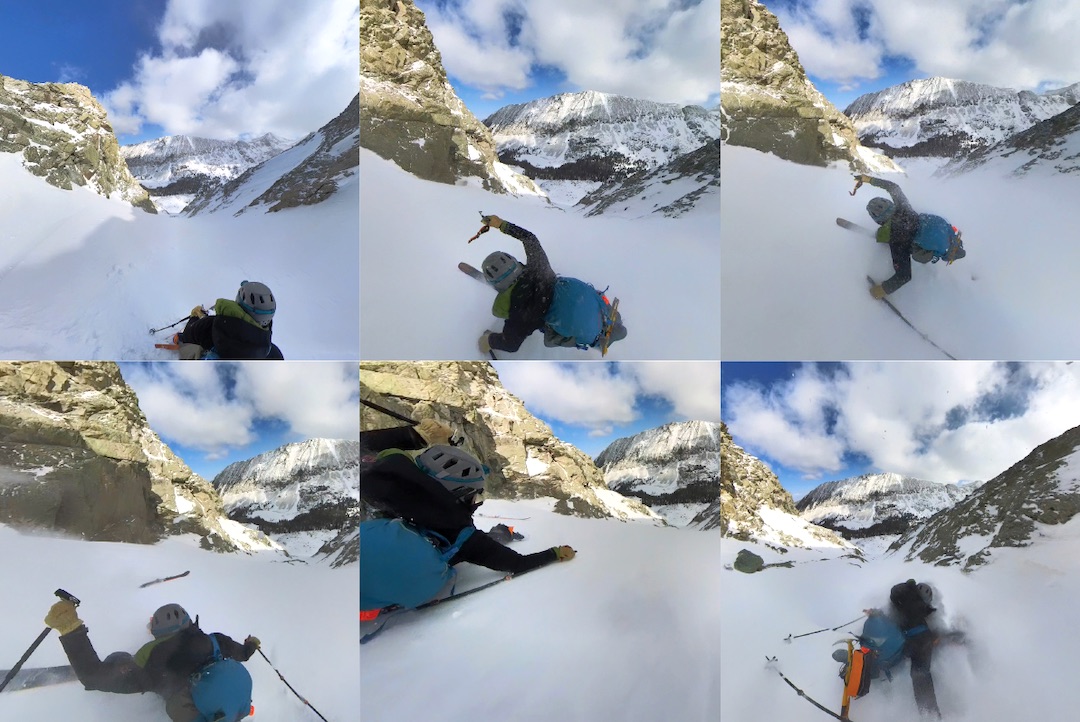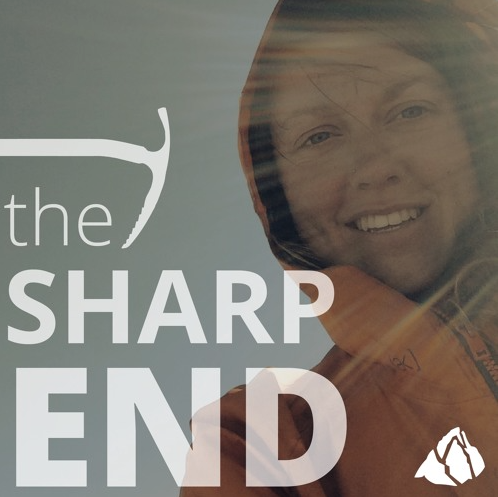Fall in Couloir — Unplanned Descent Line, Ski Released
Colorado, Sangre de Cristo Mountains, Little Bear Peak

On April 15, I (male, 33) took a 350-foot fall while skiing down a north-facing couloir that falls from the west ridge of Little Bear Peak (14,041 feet). I had been hoping to complete an early spring solo of the Little Bear to Blanca traverse, followed by a ski descent off Blanca Peak (14,350 feet).
I started the approach the previous afternoon, shooting for a weather window between 10 p.m. and 3 a.m. for the traverse, with a planned bivy near Blanca Peak. The weather was great at the start, but conditions began to deteriorate as I reached Lake Como, directly below the couloir, around 7 p.m. I decided to keep pushing and ascend the couloir (part of the standard route up Little Bear), but the snow was very soft and deep, so the ascent took two hours. As I reached the top of the couloir, the wind and snow made visibility by headlamp impossible, so I stopped to bivy against a rock face below the ridgeline. In the morning, the wind was still whipping pretty badly, so I decided to forgo the summit and traverse attempt.
I packed up camp, put on my skis, and began my descent. The snow was good (powder with a slight crust in places). Everything seemed fine until my fourth turn, when my outside ski released and shot down the mountain. I had a Whippet pole and tried to self-arrest, but could not find solid purchase with the Whippet. I ended up on my back and began sliding into a chute with rocks on either side. My body rotated and I hit one shoulder and the side of my head on the rocks, then began to tomahawk down the slope as my second ski caught on the rocks and ejected. I landed feet-first in some deep powder, felt a sharp pain in my knee, then went face-first into the snow. Luckily, I was still holding my Whippet, and I was able to self-arrest before falling the rest of the way down the couloir.
I had some minor bruising on my shoulder and a tweaked knee, and my head felt a little foggy. I had been wearing a Petzl climbing helmet, and it sustained most of the damage. I stabilized my knee with a metal piece of my pack and an ACE bandage, and was able to self-rescue back to the car.
ANALYSIS
Every time I venture into the mountains, I keep safety in the forefront of my mind. I checked avalanche conditions (the hazard was “low” at all elevations), watched the weather, wore a helmet, and was acutely aware of my surroundings and skill level going into this adventure. The snow conditions in the couloir were variable, but I felt very comfortable with the idea of skiing down.
There was no damage to the bottom of my skis indicating I had hit a rock, nor any issues with my boots. (I was using G3 ZED 12 bindings and Scarpa Maestrale RS boots.) What I would have done differently is to triple-check that there was nothing obstructing the binding’s pins in my boots, and I would have chosen to lock the toe bindings. Locking the toes creates its own risks, but it would lower the probability an unexpected release in no-fall terrain.
I did not plan to descend that couloir and was not intending to ski terrain with such high consequences. When attempting a decent like this, it would have been prudent to have a partner in the event of an accident. (Source: Dan Apodaca.)


